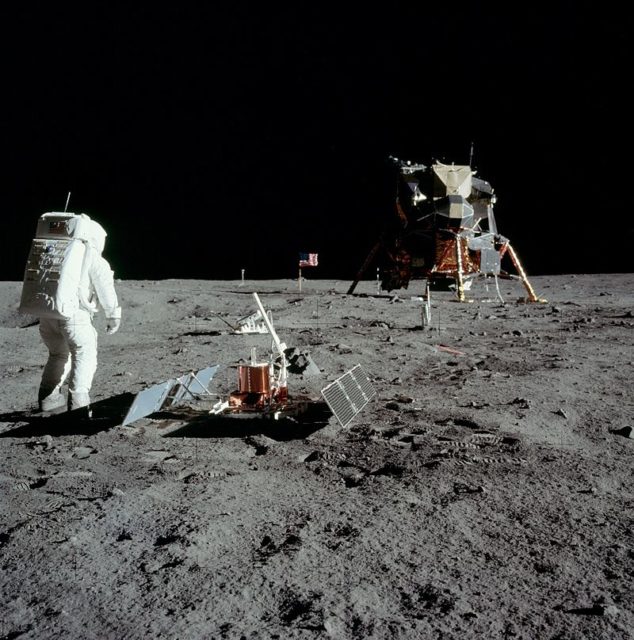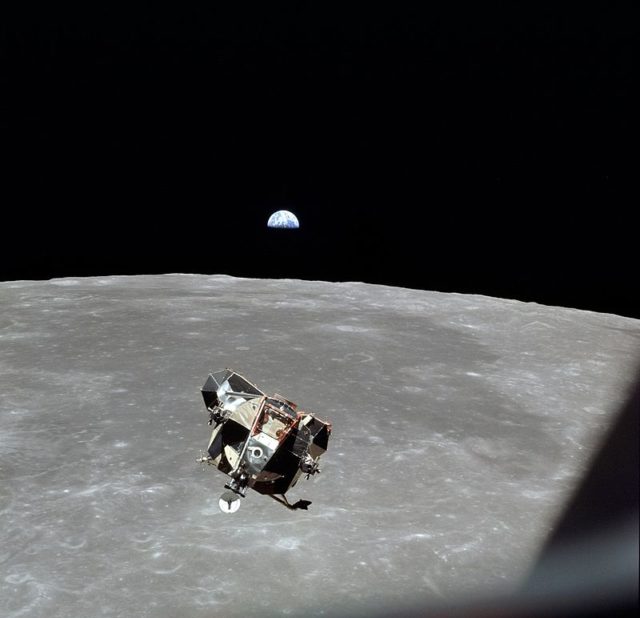The first lunar sampling bag used during the Apollo 11 operation is in the middle of a legal battle after it was taken by a previous Kansas Cosmosphere and Space Center administrator, and accidentally sold by the government after they got the bag back.

The white bag – that was flown to the moon with Apollo 11 mission in June 1969, and has lunar material enclosed in its fabric – was described by the government as “a rare artifact, if not a national treasure.” The conflict is the latest legal twist in the case of Max Ary, the founder and longtime administrator of the Cosmosphere in Hutchinson who was convicted in November 2005 of theft and selling of museum artifacts.
At issue in his criminal prosecution were hundreds of missing space memorabilia and artifacts. Some were on loan from NASA to the Cosmosphere. The lunar bag was found in a box situated in Ary’s garage in 2003 during the execution of a search warrant.
On Wednesday, the U.S. Attorney’s Office asked a federal judge to set aside the forfeiture order and revoke the bag’s sale, saying that NASA was not properly notified of its forfeiture because the bag was incorrectly identified. The bag was sold for $995 at a government auction on Feb. 15, 2015, to Nancy Carlson, a resident of Inverness, Illinois.

NASA was made aware that the Apollo 11 bag was sold with no notice or permission when Carlson sent it to NASA at the Johnson Space Center in Houston for authentication. Carlson sued NASA personally in June in a federal court in Illinois, attempting to retrieve the bag. Federal prosecutors wanted the federal judge in Kansas who was in charge of Ary’s criminal case and future forfeiture, to revoke the sale and return Carlson’s money. According to a government spokesperson, two lunar bags were mixed-up as one and the same after the merchandise identification numbers on them were combined on spreadsheets.
The other bag was an Apollo 17 lunar sample kit that was taken to the Moon’s surface on board the Lunar Module Challenger. It was sold by Ary at a 2001 sale for $24,150, and it was later recovered by the government during the investigation. Ary, who was CEO and president of the Cosmosphere from 1976 to 2002, was sentenced to three years in prison and was made to pay a penalty of $132,274 in restitution. He has been discharged from prison after serving only 70 percent of his sentence. He has always maintained his innocence, stating he unintentionally mixed museum artifacts with the ones he collected and sold privately from his home.
